
Photo credit to Houston Furniture Bank
The Houston Furniture Bank runs a mattress recycling program to fund some of its operations. Only 1 in 10 mattresses donated to Houston Furniture Bank are in good enough condition to be sanitized and distributed to familes in need. Rather than incur the expense of throwing these mattresses away into Houston’s landfills, the Mattress Recycling Center at the Houston Furniture Bank turns what would be waste into revenue and jobs for people with barriers to employment. This social business sells the collected steel and foam to fund Houston Furniture Bank’s furniture assistance programs.
As in most warehouse and industrial jobs, the challenge is efficiency. Because mattresses have many different architectures and arrive in a variety of conditions, deconstruction is difficult to automate. Instead, it is done manually using box cutters. The original mattress recycler, DR3 on the west coast, uses metal swivel tables which allow workers to access all the edges of the mattress without walking in circles around the table. As the Houston Furniture Bank was starting their DR3-inspired mattress program, they discovered those metal tables retailed for $5,000. I do not know the origin of that figure or who sells them but when I was asked to find an alternative, the number to beat was $5,000 per table.
The first prototypes I built involved welding a small steel frame with casters to support a 6' sheet of plywood. These surfaces sat on top of the existing old desks used by the nascent recycling program. This design has some flaws. First, the supporting desk is often in the way since it is nearly 6' long itself. Having a lazy Susan table does not eliminate the need to walk around the workspace. Second, the welded frame is unnecessarily expensive. As I built more of these and watched them age, the failure mechanism became clear. The table rotates around a 1/2" carriage bolt which travels through the top of the table to the bottom of the desk. That bolt wears on the wood surfaces. With enough wear, the table fails to pivot as smoothly. In the most recent iteration, both sides of the desk and swivel top are reinforced with a 2" x 4" piece of 11 gauge sheet metal.
Moving away from a steel under-frame removes the need for welding. Because it involves no welding, it can be built more quickly with a smaller, more common set of skills and tools. I built the most recent two tables in about five hours using just a router, skilsaw, angle grinder, and drill driver.
When they need a few more tables, I plan to space the casters further apart. Having spent another day working with them, I believe I may have made a mistake sticking to my old plans with the wheels on a 16" radius. The wider the caster base, the more stable the table provided it does not roll off the edge of the lower support. Before making any decisions, I plan to observe how these wear and see how much play develops around the pivot point.
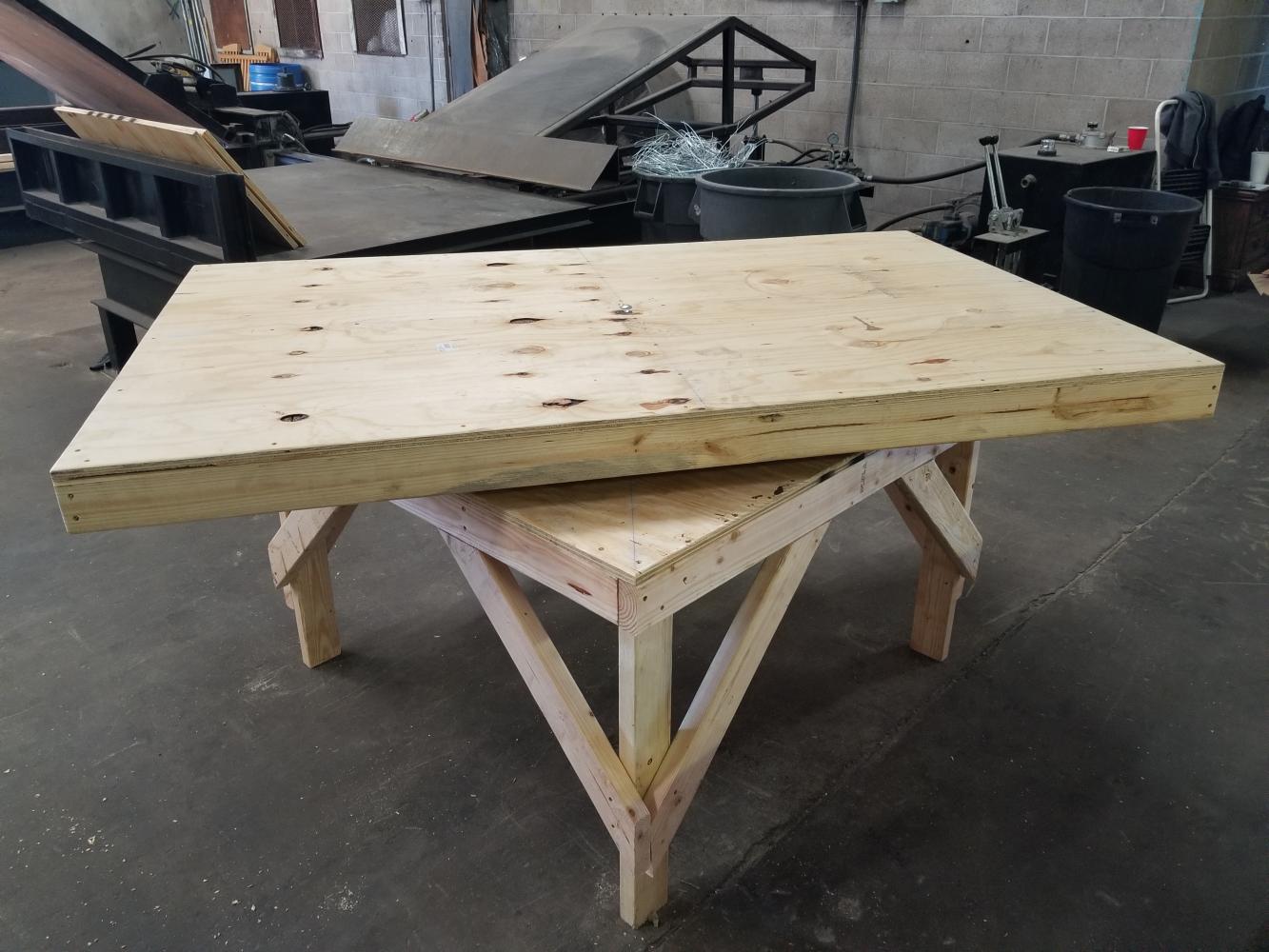
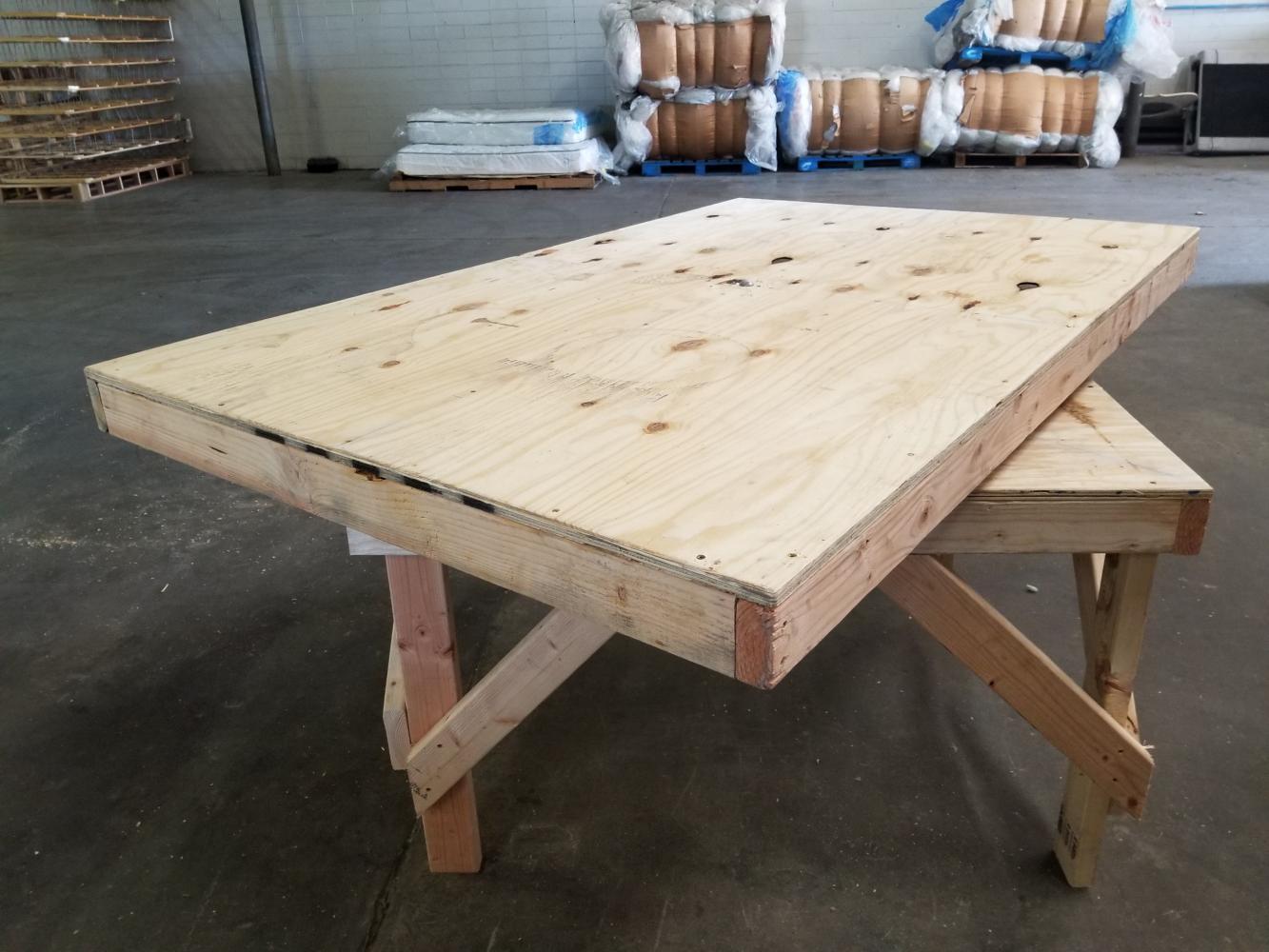
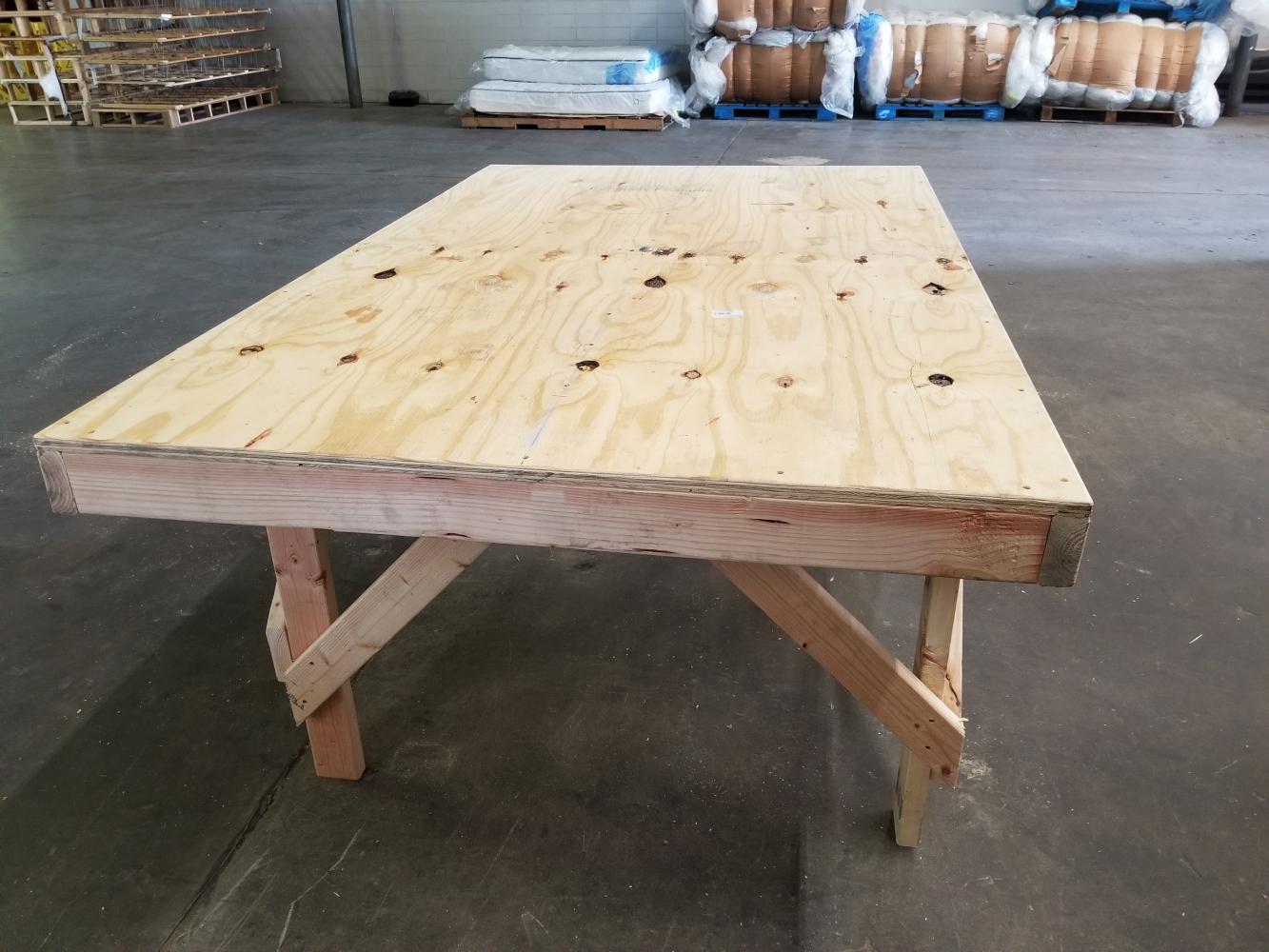
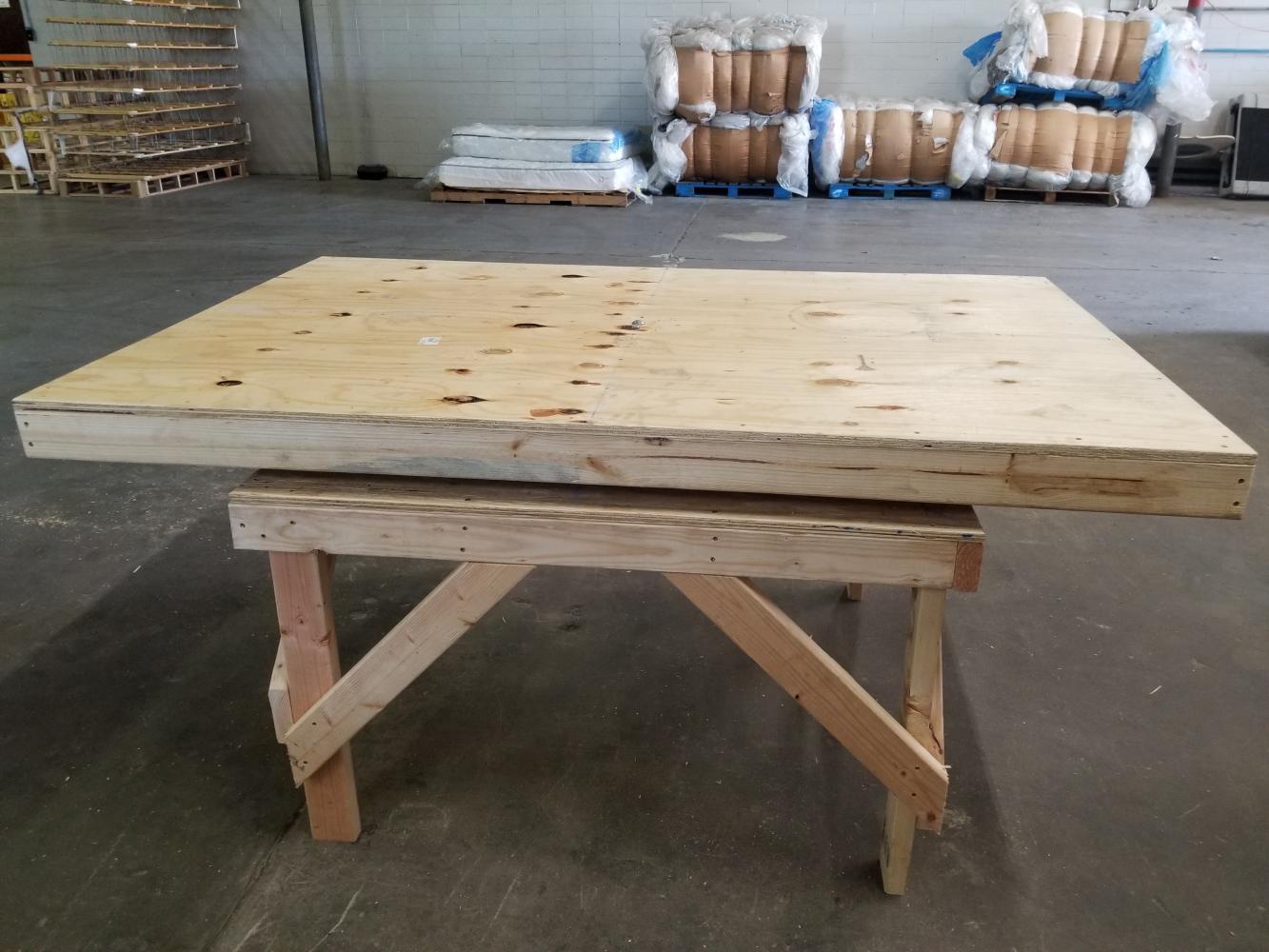
[Caption] Swivel tables for mattress recycling constructed from plywood, 2x4s, and casters. This 2020 model was constructed for $150 per table. Rounding over the plywood corners with a 1/4" radius reduces the tendency of plywood edge to chip.
[Caption] CAD design for mattress recycling table (dxf). Using a pipe flange to force the center carriage bolt to stay vertical during rotation reduces friction and makes the table last longer. Welding or gluing the pipe nipple into the flange prevents the bolt from unscrewing the nipple. Use a nylon lock-nut on the 1/2" carriage bolt to prevent the table rotation from slowly unscrewing the carriage bolt nut.
While this is far from my most challenging or technical project, it is one of my more useful. In 2014, I built the first 4 table prototypes, 2 of which are still in service today. In 2016, I built 8 more tables all of which are still in service. In 2020, I repaired 4 of them and I built 2 more, hoping to correct some of the earlier design flaws. As of today, the furniture bank has 12 giant lazy Susans which have recycled over 100,000 mattresses.
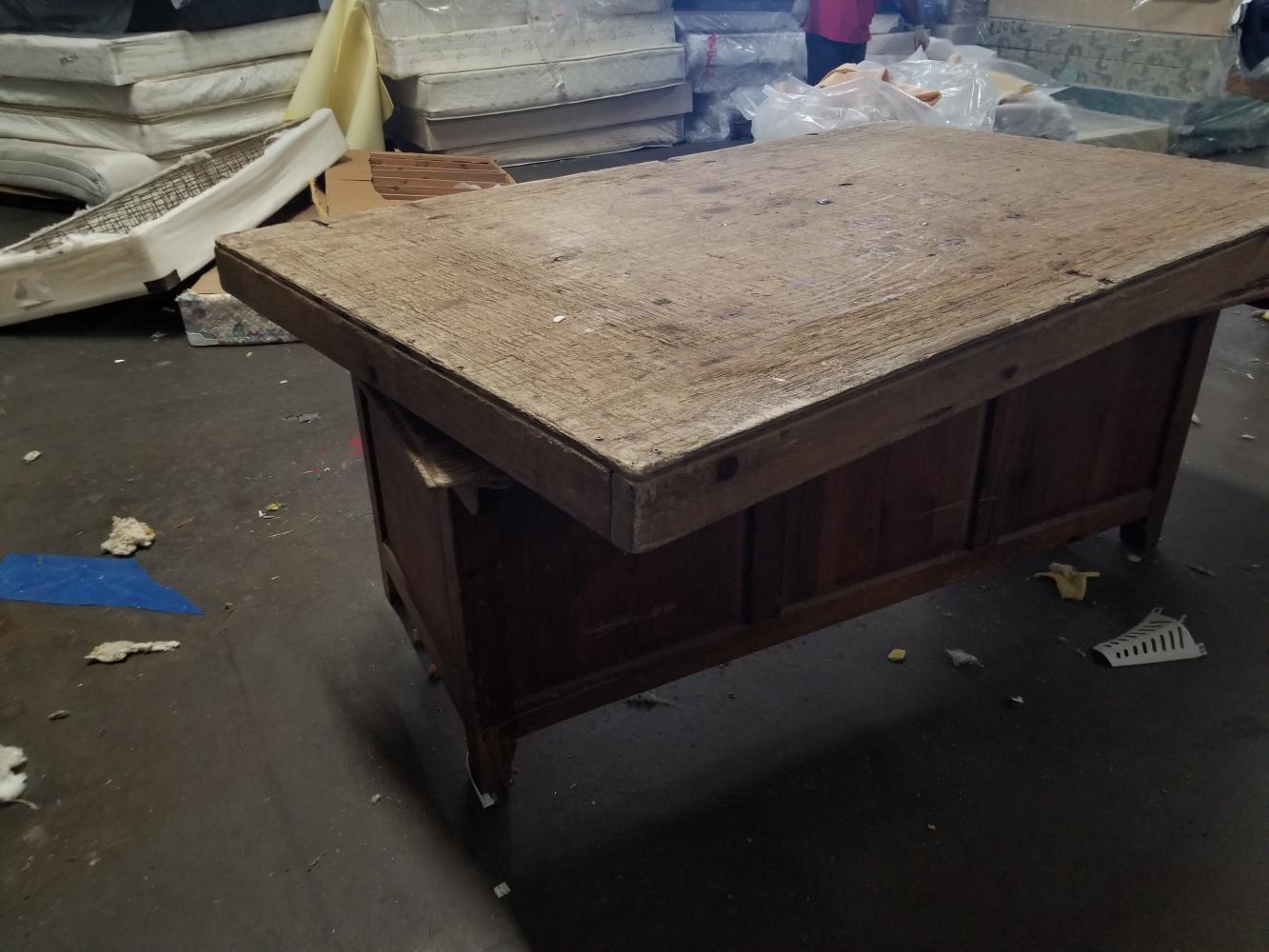
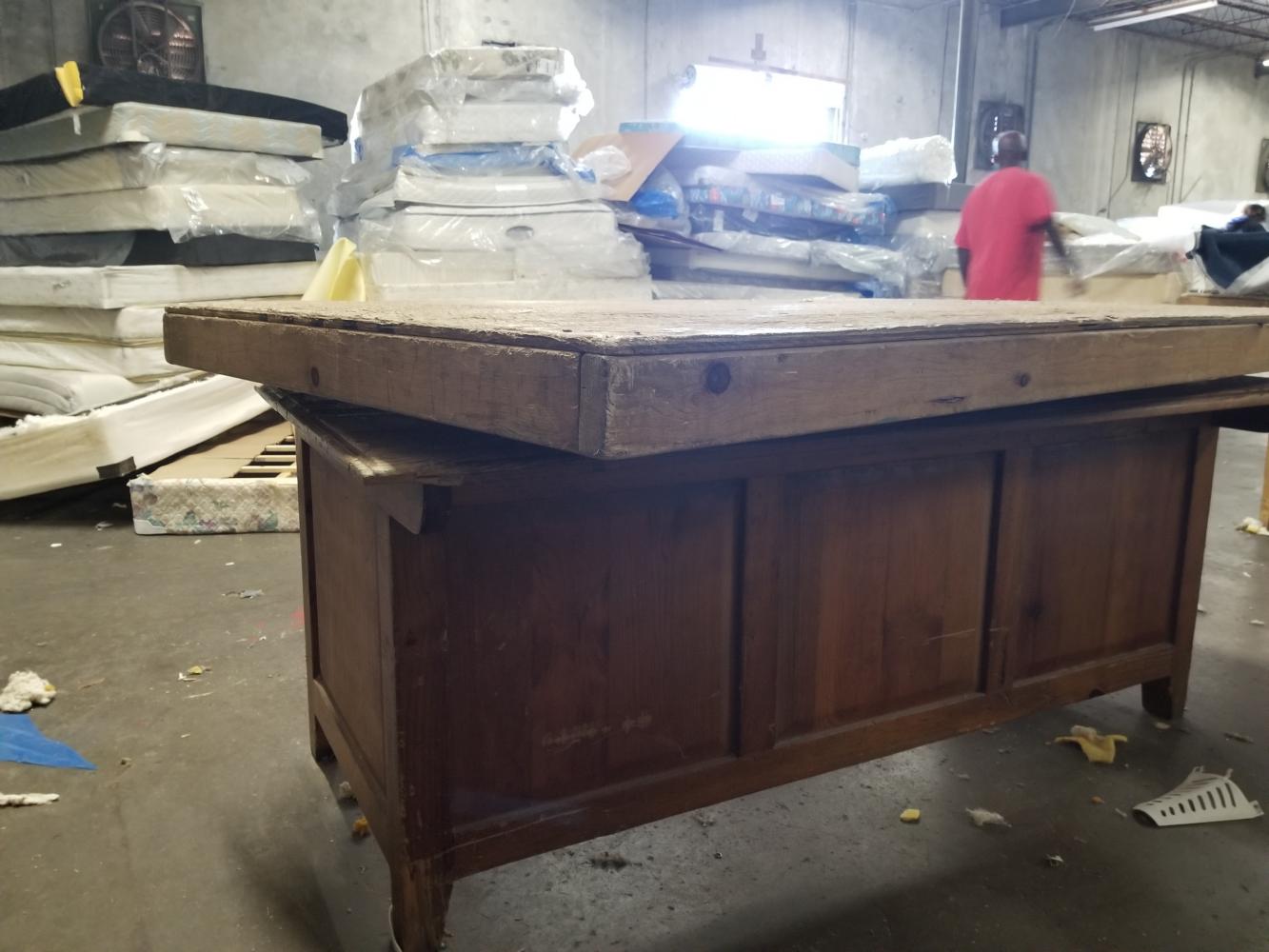
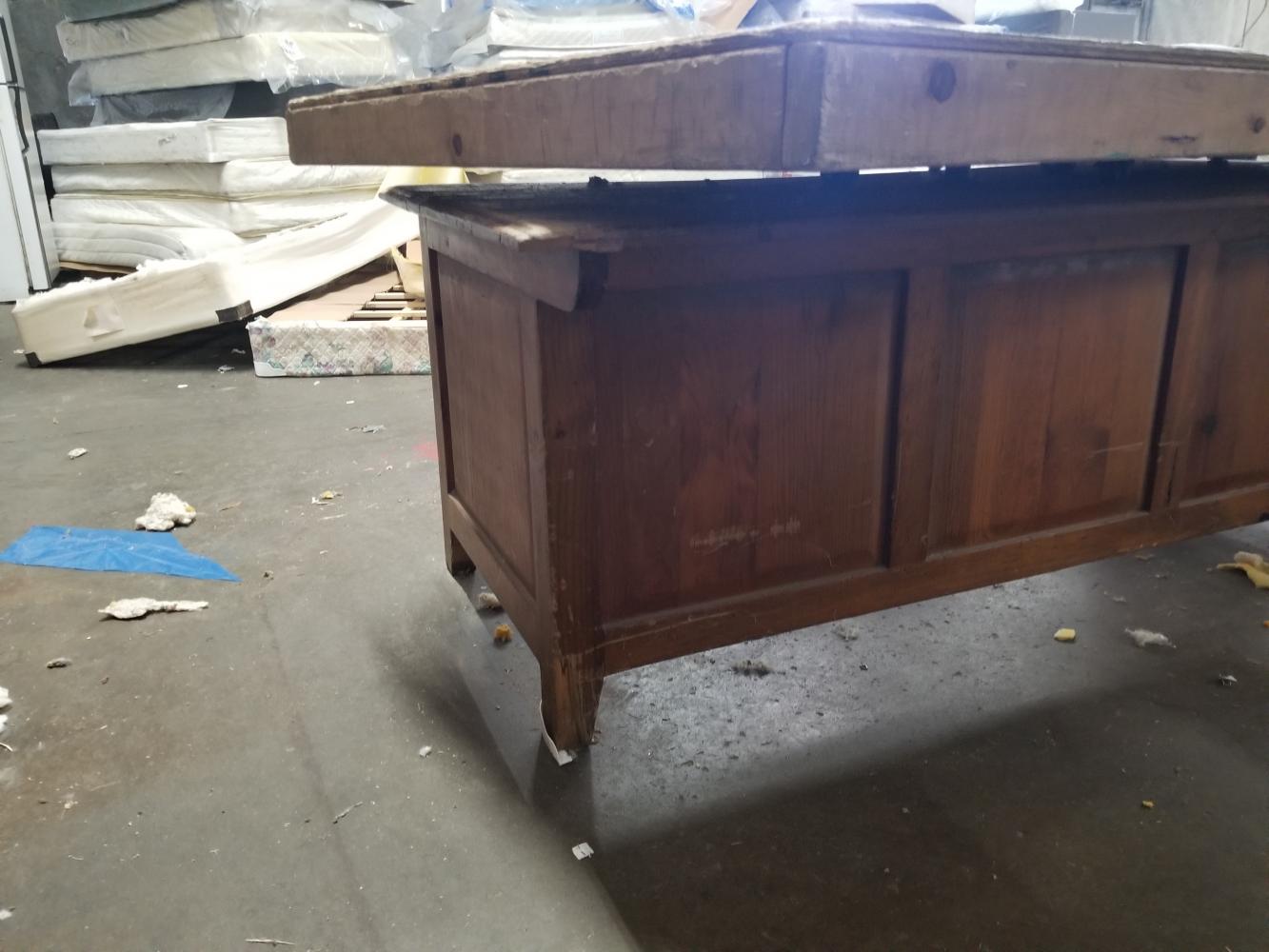
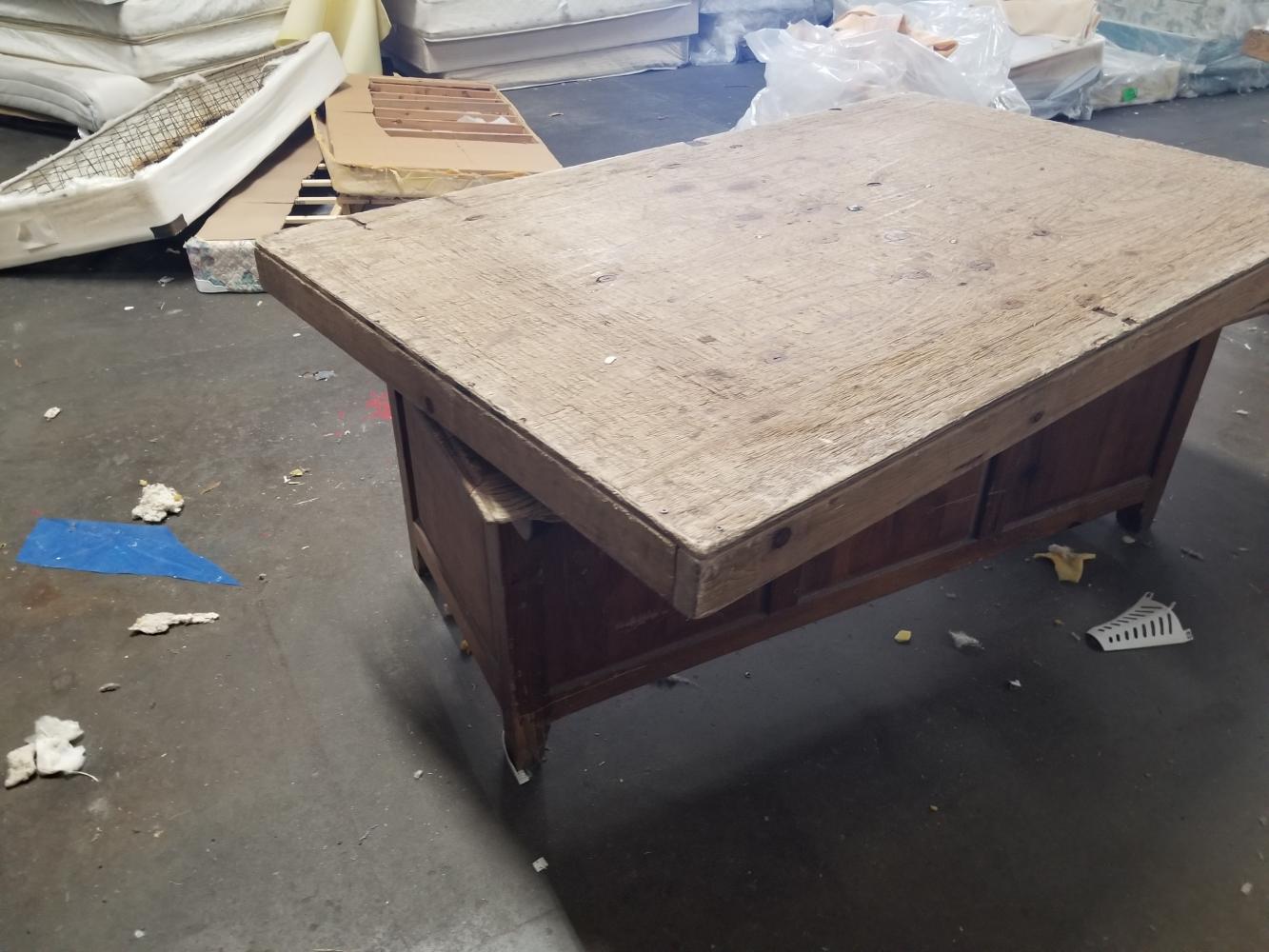
[Caption] Signs of use. This table is one of the four original prototypes. It was constructed in 2014 and has probably helped deconstruct 7,000-10,000 mattresses. Instead of a 2x4 cross, the underside of this table has a welded steel frame. It is unnecessarily expensive and does not strengthen the wood surfaces that rub against the center carriage bolt (the critical failure point).